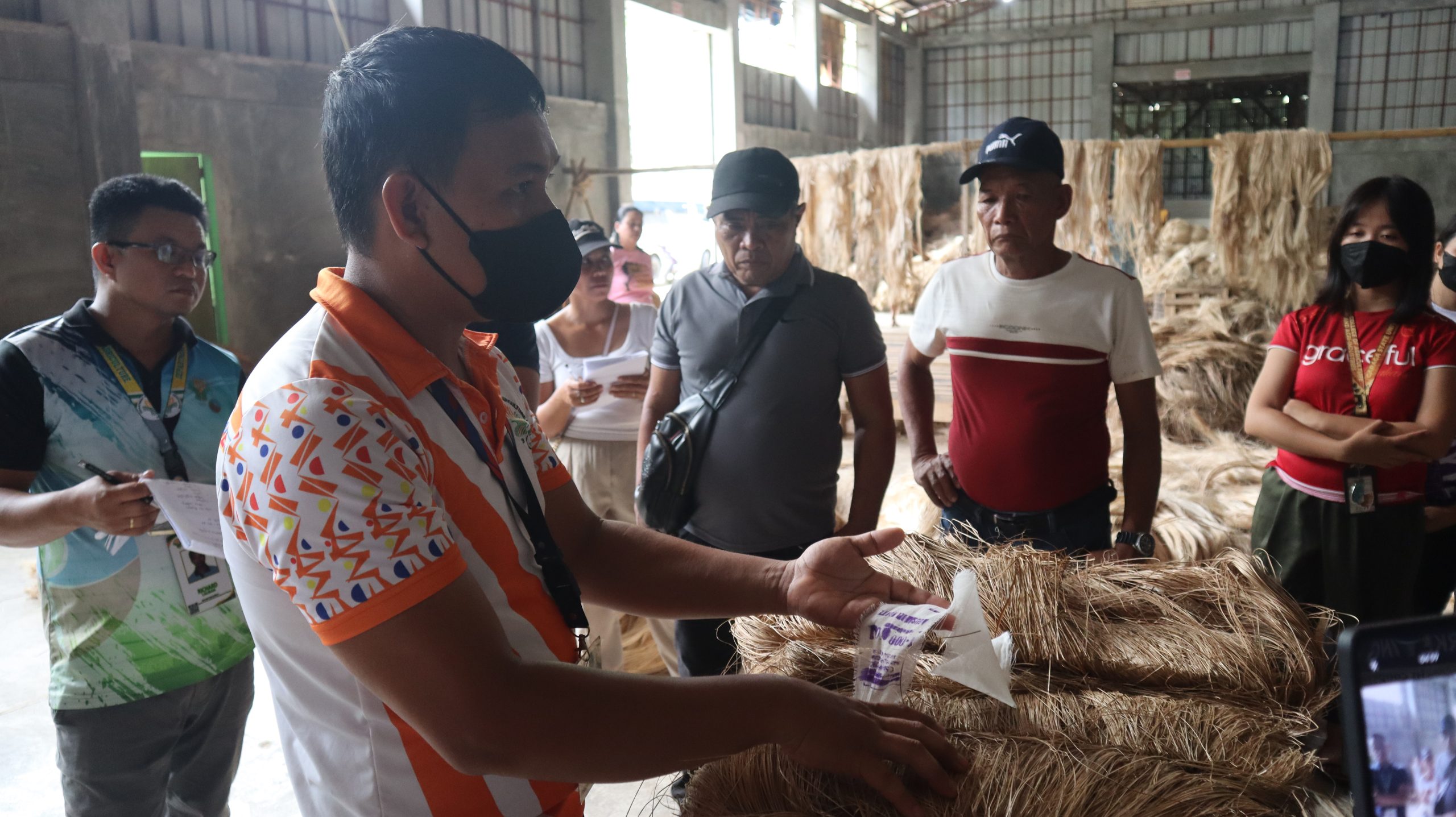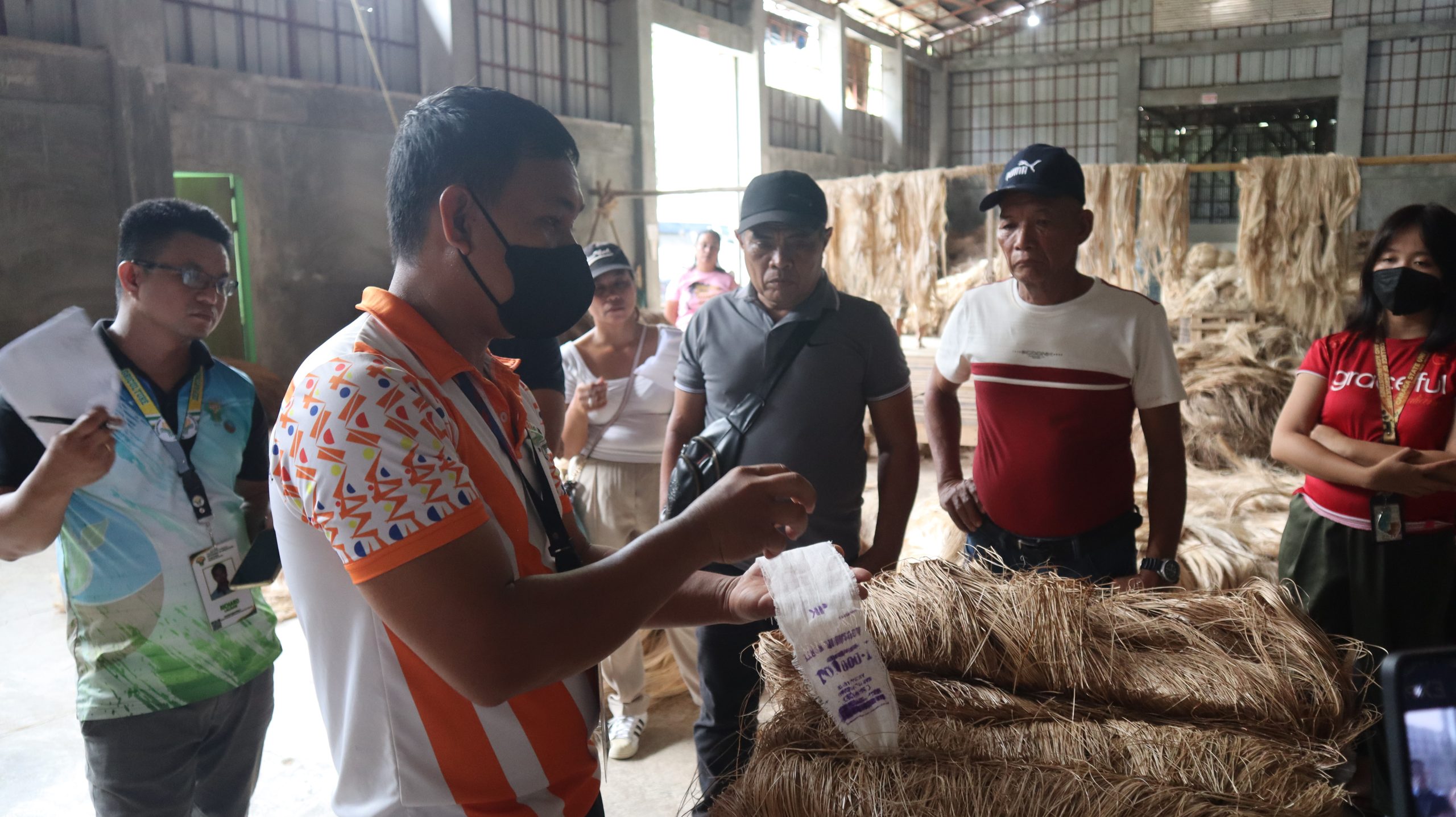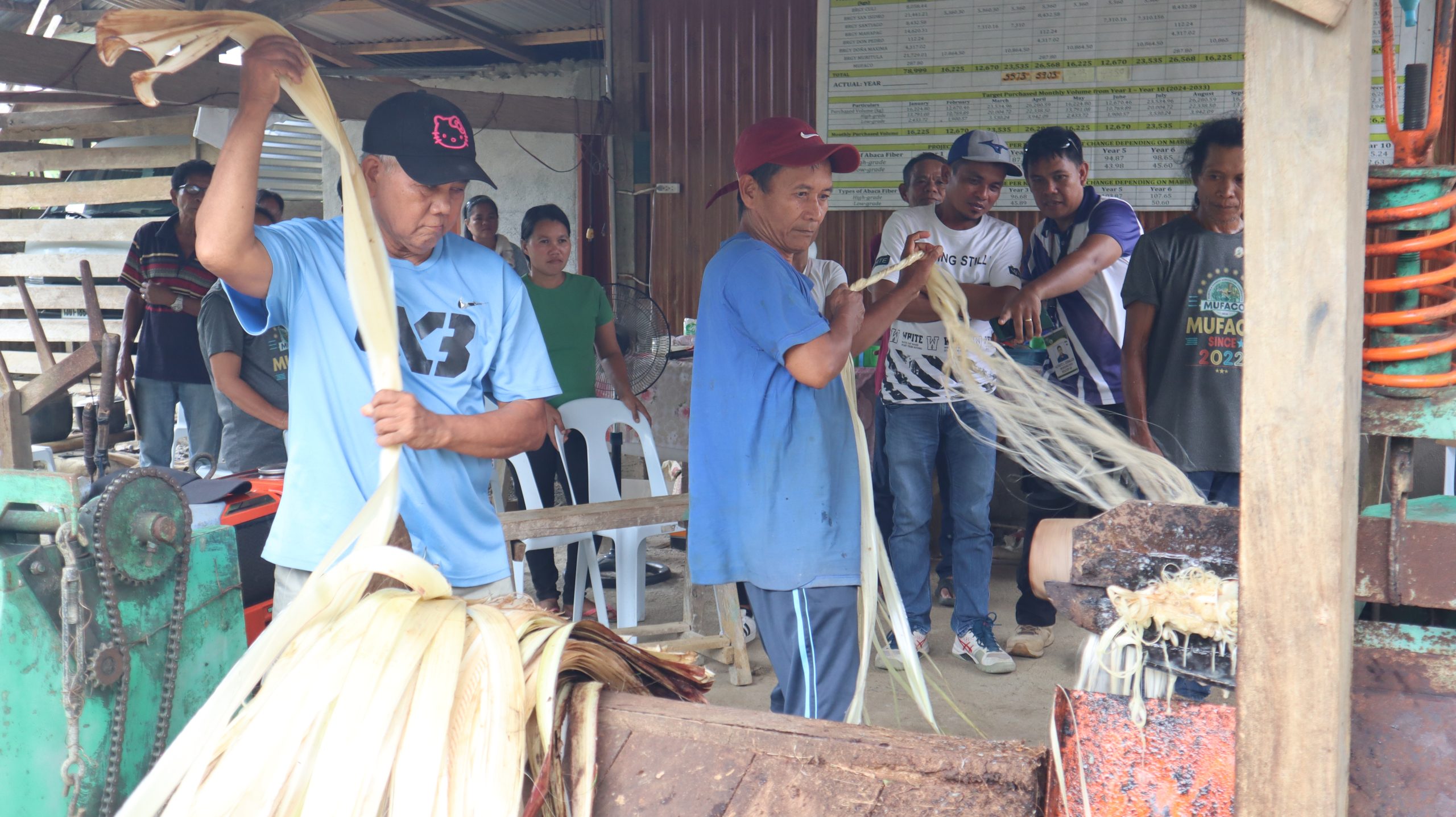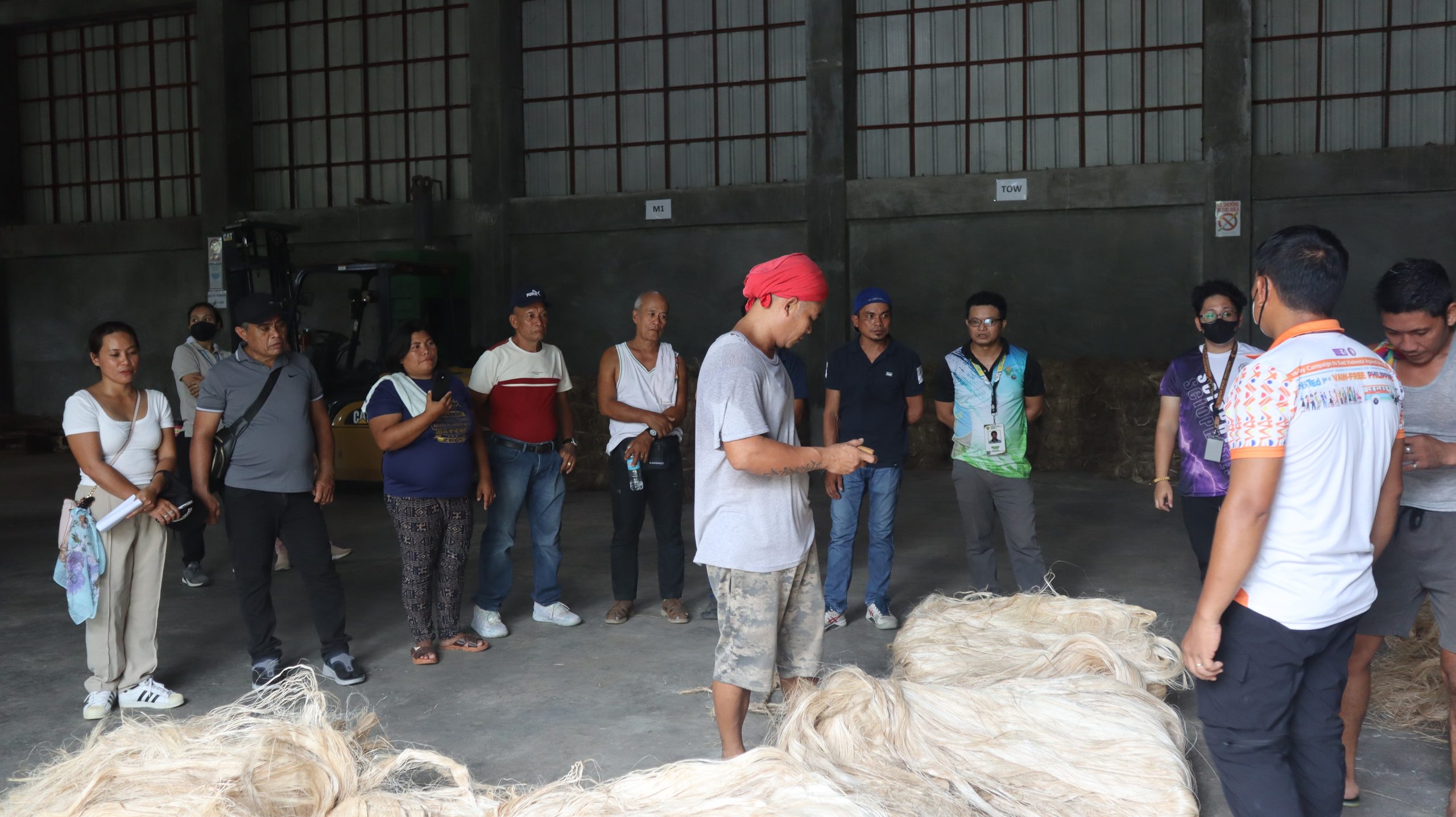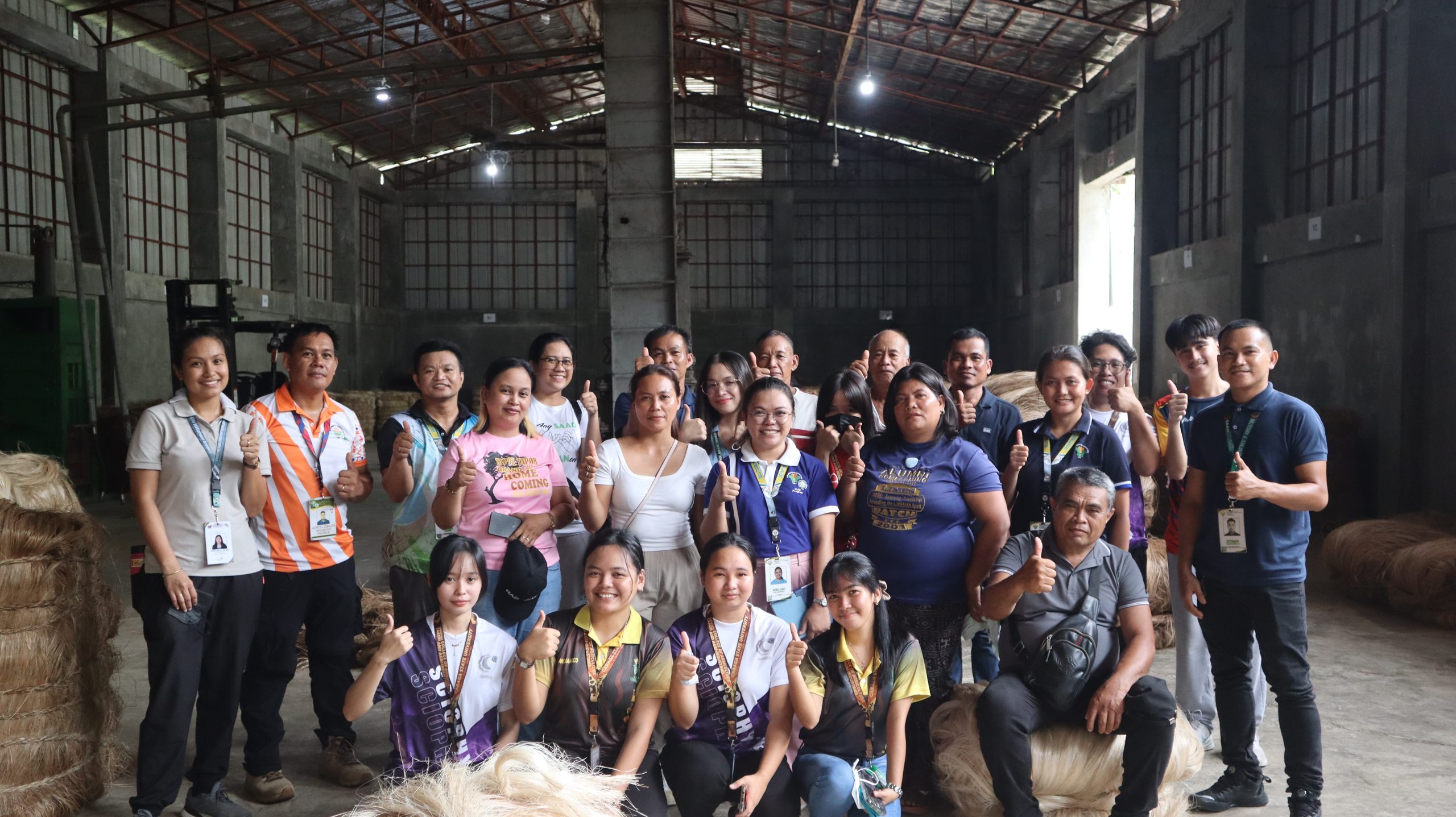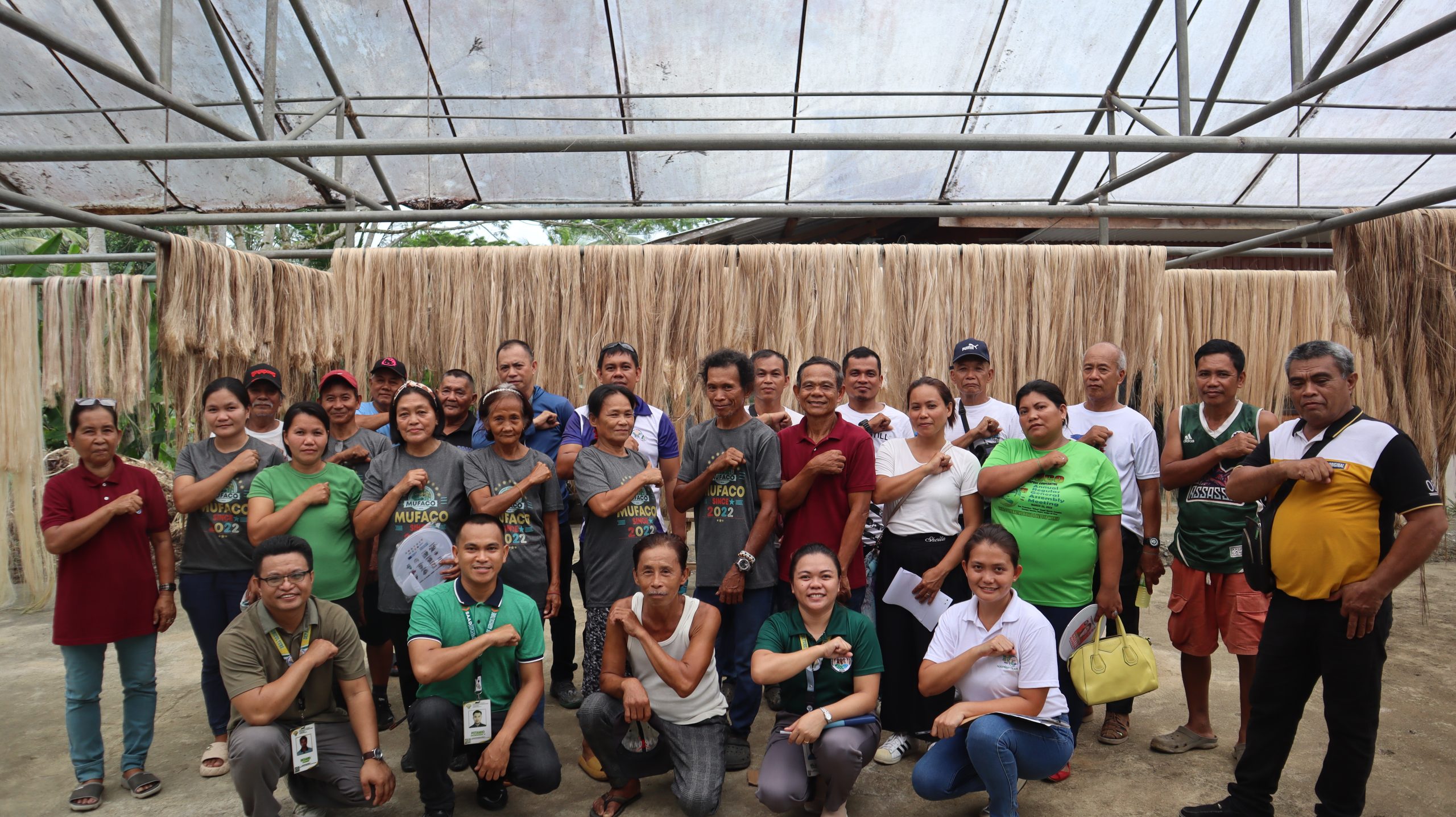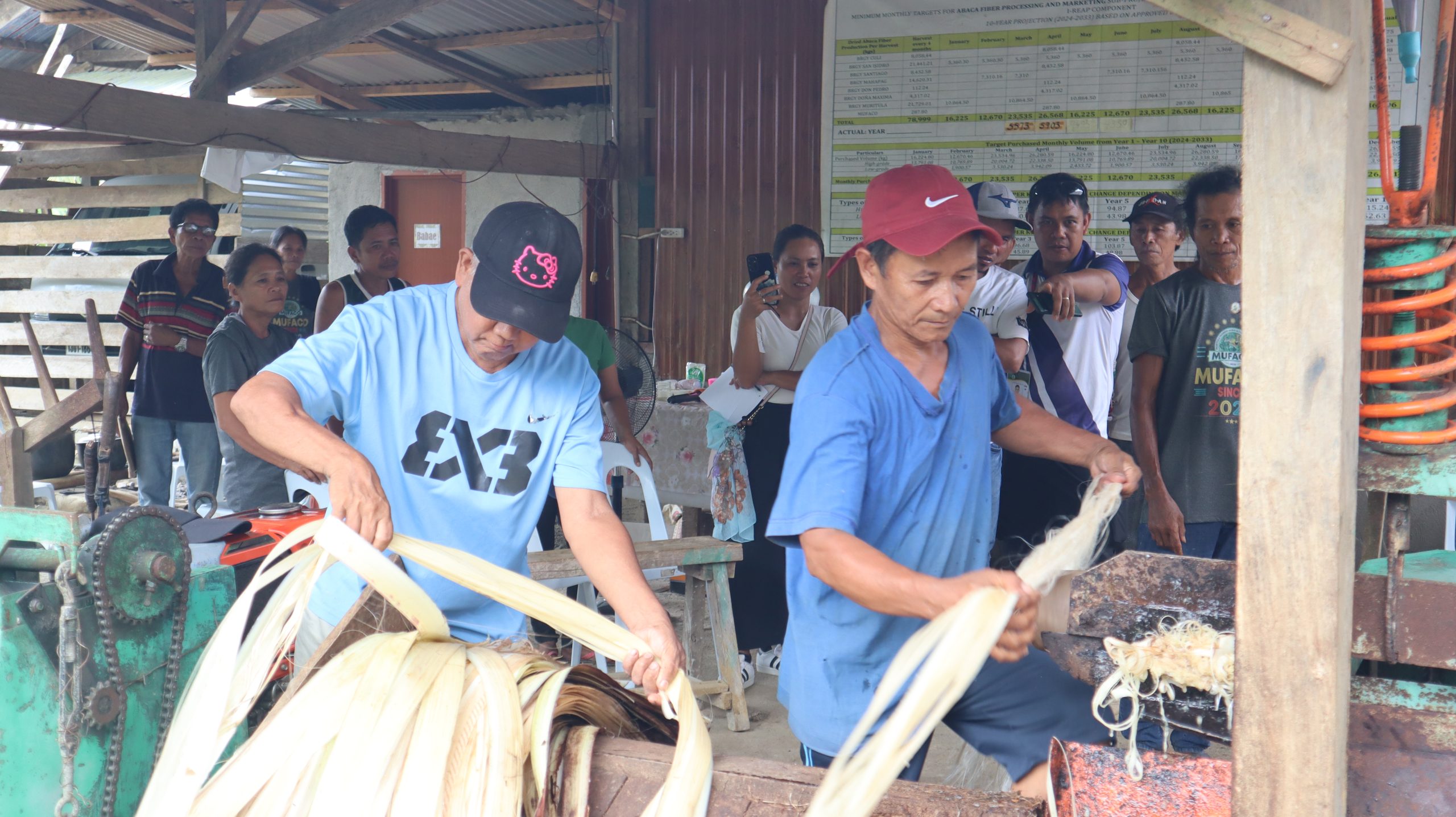Department of Agriculture – Special Area for Agricultural Development (DA-SAAD) Program recently conducted a two-day benchmarking activity on abaca fiber classification and licensing last June 10-11, 2025 in Brgy. Muritula, San Luis, Agusan del Sur and Brgy. San Isidro, Santiago, Agusan del Norte.
The benchmarking activity was held in partnership with Philippine Fiber Industry Development Authority (PhilFIDA) Caraga, and was aimed to broaden the technical knowledge of the farmer beneficiaries of SAAD in terms of quality assurance and marketability of abaca fibers.
Present during the activity are the farmers from San Antonio Farmers Organization (SAFO) of Remedios T. Romualdez, Agusan del Norte; San Juan Abaca Farmers Association (SJAFA) of Alegria, Surigao del Norte; and Biyabid SAAD Farmers Association (BiSAFA) of Sison, Surigao del Norte.
The first stop of the abaca benchmarking was in the processing area of Muritula Farmers Agriculture Cooperative (MUFACO) in San Luis, ADS, a SAAD phase 1 beneficiary, where the farmers observed the stripping, drying, and storing processes of the group.
Talking about stripping machine operation, MUFACO General Manager, Antonio Real shared that, “practice makes perfect when it comes to controlling the stripping machine. It will take time before you master it. So don’t be pressured about your speed in stripping because your safety shall come first,” explaining that mastery in abaca fiber processing is a complex task that needs constant practice to get the hang of it.
Samson Mariveles, Board Director of MUFACO also added that tumbling, tuxying, and stripping should be collectively done within a day to ensure the optimum quality of the abaca fibers.
“Leaf sheaths of the abaca stalk shall only be the parts to be stripped. Experts from PhilFIDA will know when prohibited parts of the abaca plant like petiole are being added to make the bundle heavier,” he added.
The SAAD farmers were also reminded by Joel Portigo, Provincial Fiber Officer for Agusan del Sur to make sure that the storage facility of the abaca fibers shall not be stored with other commodities to prevent cross contamination and maintain the utmost physical quality of the fibers.
Sharing some organizational insights to the farmer visitors, MUFACO chairperson, Santos Escalicas highlighted that having a strong heart and mind are crucial in leading an organization, especially when challenges arise and when the group receives a lot of discouraging comments from outsiders.
“Perseverance and hardwork among the members are important factors for the success of the project implementation. I believe that we fairly did a good job in sustaining our project as our good record was recognized by the Philippine Rural Development Project (PRDP) and helped us grow our abaca production project further, especially on the mechanization side. If we can do it, you can do it as well,” said Escalicas.
During the immersion at the warehouse of San Isidro Upland Farmers Multi-Purpose Cooperative (SIUFMULCO) in Brgy. San Isidro, Santiago, Agusan del Norte the SAAD farmers learned about the process of purchasing, sorting, tip cutting and cleaning, final classification, pressing and bailing, and inspection. Which These are required for large-scale groups that are producer-purchasers of abaca fibers.
During the activity, Alfritz Ceballos, PhilFIDA Caraga’s Fiber Development Officer II shared that “In purchasing, one should insure the overall quality of the abaca fiber from the get-go before any financial transaction is made. Color, strand size, fiber length, and tensile strength are some of the parameters to determine if it passes the quality standard of the market.”
Ceballos also reminded the participants that they should always check the wetness and dryness of the fibers — stressing that too much moisture content will affect the accurate weight of the fibers and will cause molding, while too much dryness will cause brittleness to the fibers.
Fiber Licensing Process
During the activity, SIUFMULCO certified fiber classifiers and PhilFIDA officers demonstrated fiber classification and grading processes which are being influenced by color and strand size.
“Certified fiber classifiers are not appointed by the group, but the group can choose the members who will undergo the course required by PhilFIDA to be certified,” said Phoebe Grace Colonia, Provincial Fiber Officer for Agusan del Norte.
SIUFMULCO personnel also demonstrated the mechanized pressing, bailing, and tagging of the abaca bundle to indicate its place of origin, fiber grade, and batch number.
Wrapping up the benchmarking activity, Ceballos headed a practical demonstration of how PhilFIDA conducts its final inspection and its considerations before giving clearance to the batch of abaca bundles for delivery.
Benchmarking Activity Feedback
“As the appointed personnel to manage the stripping machine operation and its maintenance when our abaca is ready for harvesting, this activity was a good learning experience to learn practical techniques in stripping, and protecting oneself from the hazards of using the machine,” said BISAFA member, Reynaldo Toraja.
SJAFA Chairperson Brimo Dagsa expressed his thoughts on the activity saying, “This training opened our eyes to the bigger picture of abaca trading and it challenges us to aim bigger for our organization’s future growth in the fiber industry. For now, it inspires us to nurture the project that was given to us by SAAD.”
The benchmarking activity was an avenue for the newbie and existing small-scale abaca farmers to learn new technologies and proper practices in processing abaca fibers while they await the maturity of their abaca plants suited for harvesting in the last quarter of 2025.
SAAD will continue to partner with the respective LGUs of the Farmers’ Associations (FAs) through their Municipal Agriculture Offices to continue the technical and marketing support from the program to level up their FAs into a partially established Community-Based Enterprises (CBEs).
